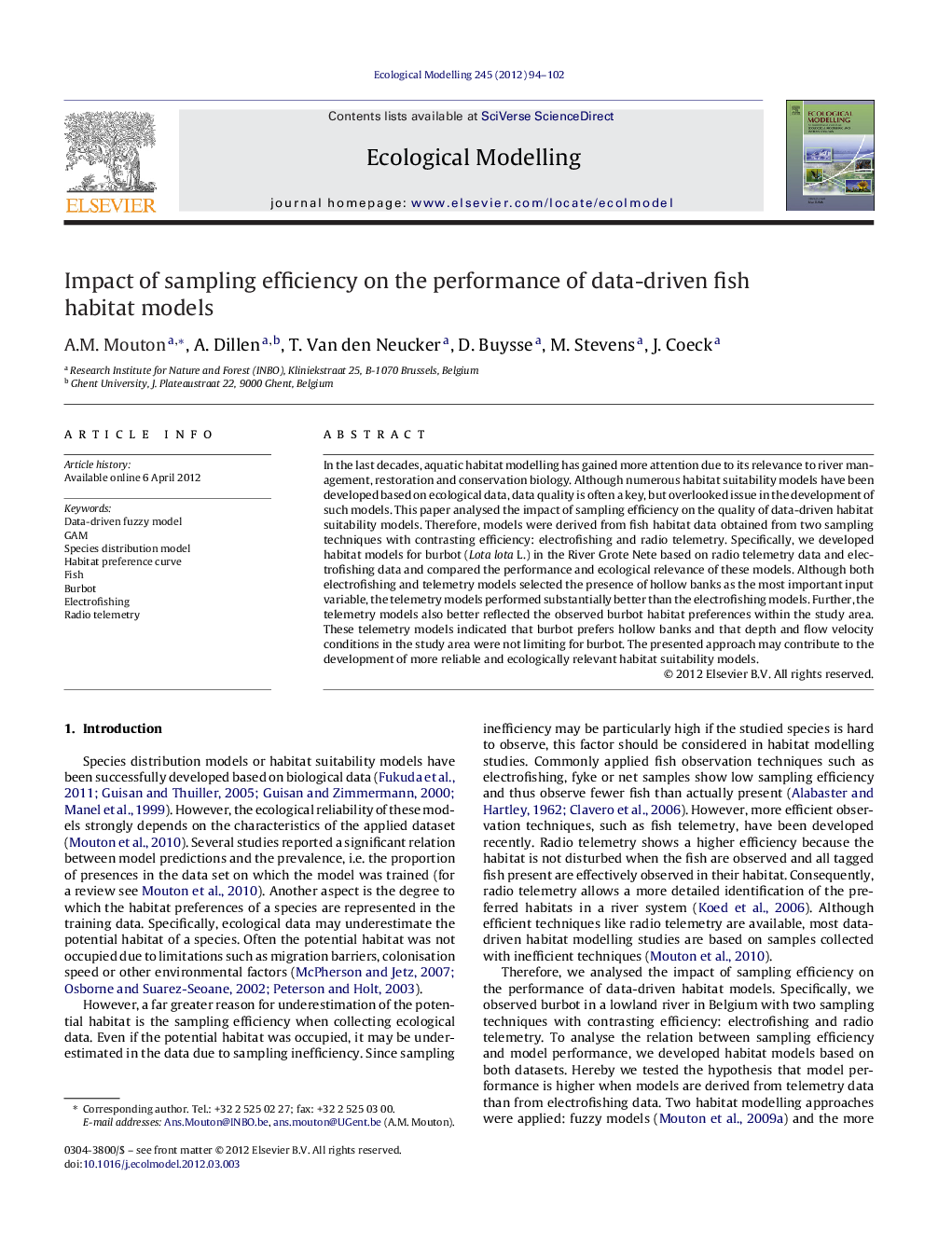| Article ID | Journal | Published Year | Pages | File Type |
|---|---|---|---|---|
| 4376314 | Ecological Modelling | 2012 | 9 Pages |
In the last decades, aquatic habitat modelling has gained more attention due to its relevance to river management, restoration and conservation biology. Although numerous habitat suitability models have been developed based on ecological data, data quality is often a key, but overlooked issue in the development of such models. This paper analysed the impact of sampling efficiency on the quality of data-driven habitat suitability models. Therefore, models were derived from fish habitat data obtained from two sampling techniques with contrasting efficiency: electrofishing and radio telemetry. Specifically, we developed habitat models for burbot (Lota lota L.) in the River Grote Nete based on radio telemetry data and electrofishing data and compared the performance and ecological relevance of these models. Although both electrofishing and telemetry models selected the presence of hollow banks as the most important input variable, the telemetry models performed substantially better than the electrofishing models. Further, the telemetry models also better reflected the observed burbot habitat preferences within the study area. These telemetry models indicated that burbot prefers hollow banks and that depth and flow velocity conditions in the study area were not limiting for burbot. The presented approach may contribute to the development of more reliable and ecologically relevant habitat suitability models.
► Assess impact of training data quality on habitat models’ performance and relevance. ► Data quality quantified by the efficiency of different sampling techniques. ► Habitat models developed for burbot, an endangered fish species in Belgium. ► Advanced telemetry sampling, increasing efficiency, improved model quality.
